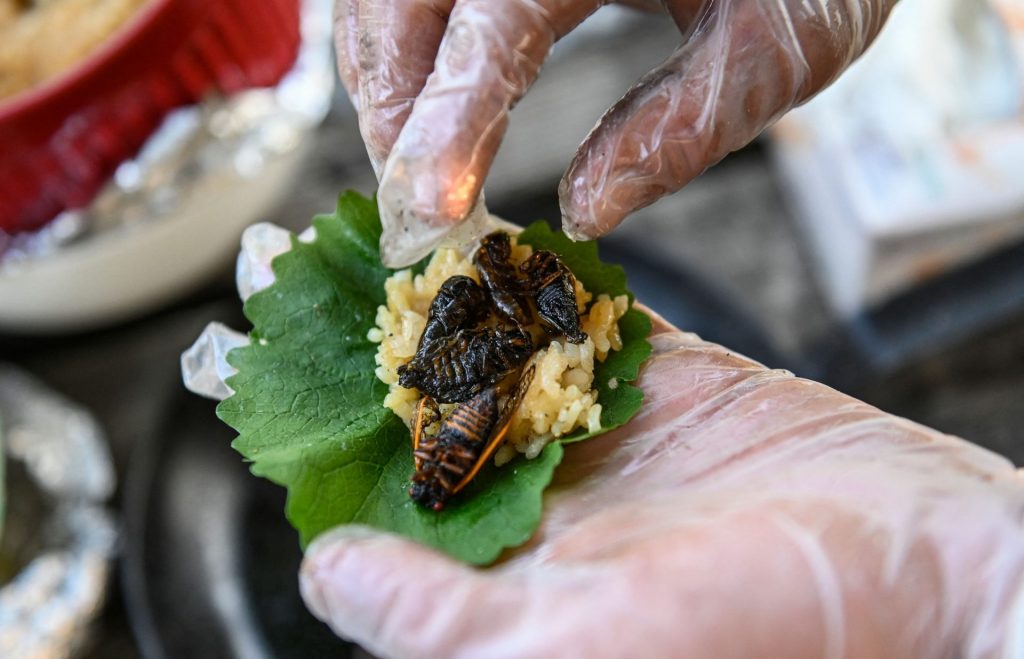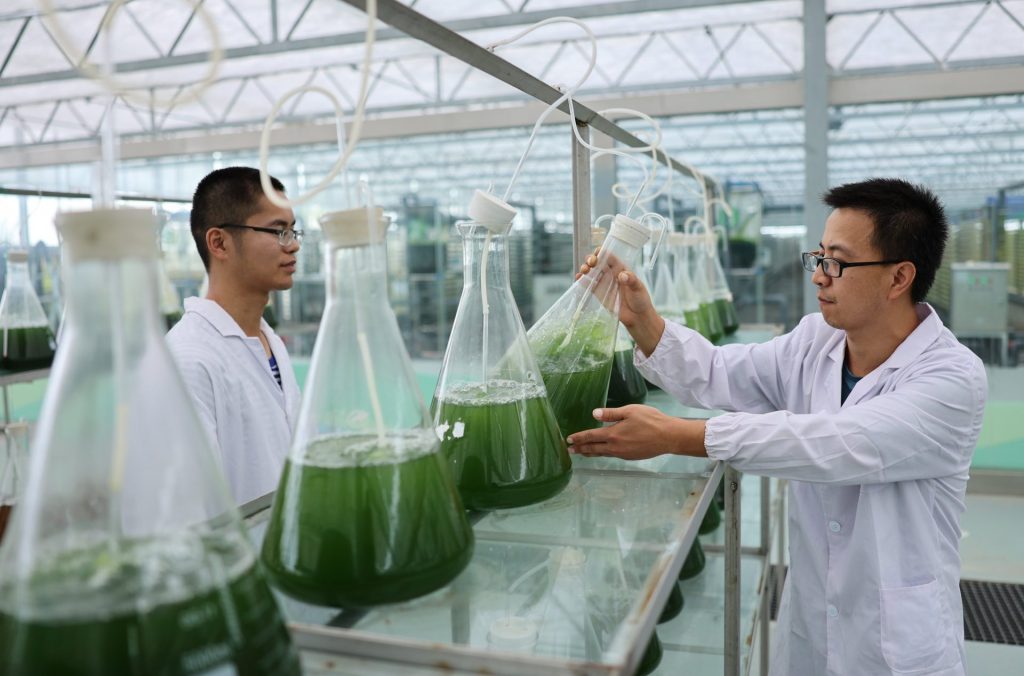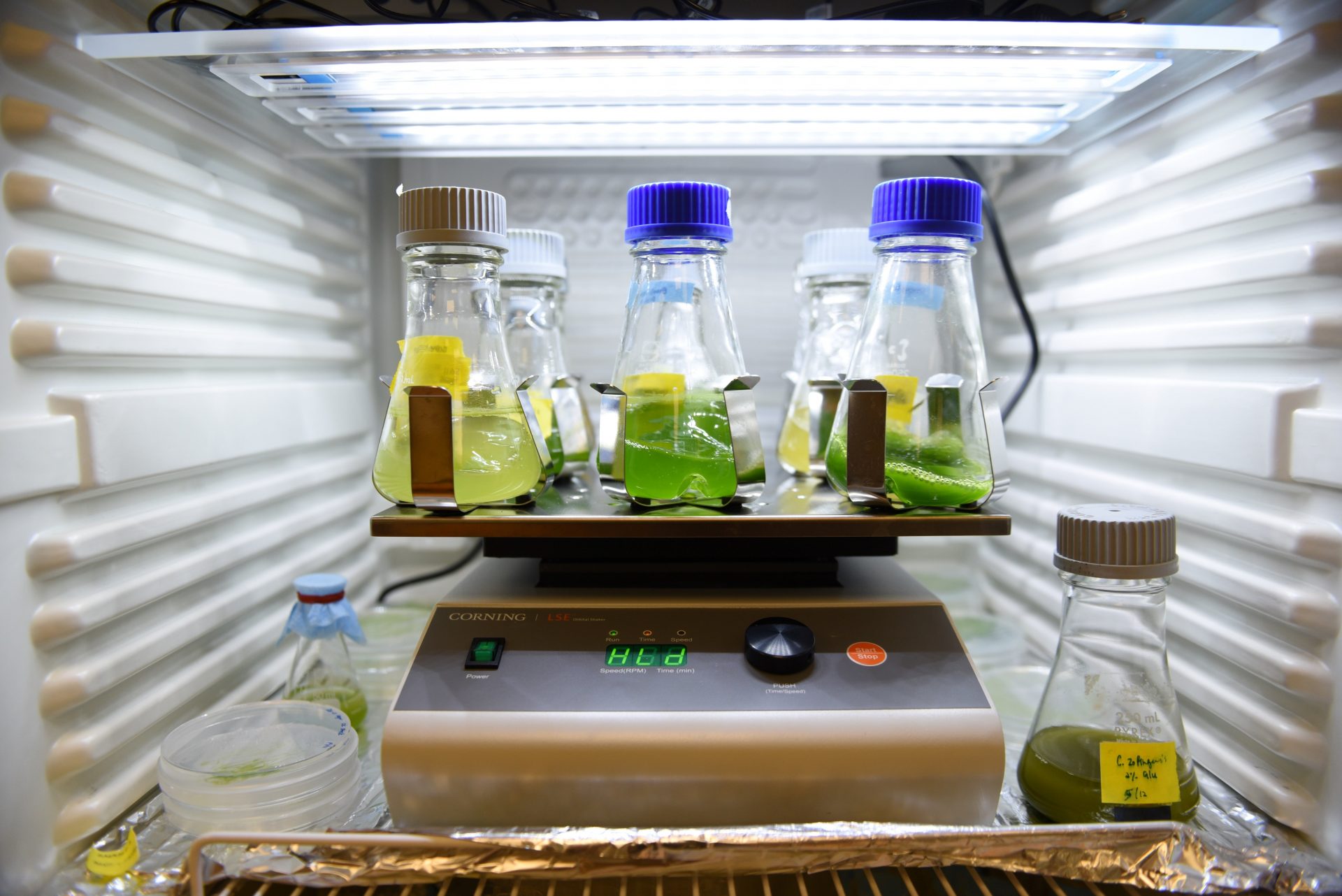“Oh boy, oh boy, mom, you sure can hydrate a pizza!” yells a grey-haired Marty McFly in the 1989 blockbuster Back to the Future Part II.
In the scene – set in 2015 – an elderly Lorraine McFly places a cookie-sized disc inside a Black & Decker ‘hydrator’, removing it seconds later as a steaming, full-size pepperoni pizza. Director Robert Zemeckis’s vision of a 21st-century world of flying cars and television-screen waiters may not have come to pass (yet), but innovations in food and cooking mean that the menus of the future will be tastier, healthier and more exciting than anything we have even dreamt.
For a start, nutrition is going to be intensely personal. A decade ago, only athletes and super-keen gym bunnies would keep close tabs on their exercise regime. Today, it can be hard to find a cyclist, jogger or hiker who doesn’t use some type of watch, phone or tracker to log their every exercise, often proudly sharing their sweaty toil online.
The same will soon be true for our eating habits. Our digital devices will offer us personalised dietary guidance, based on our genetics, lifestyle, and the bacteria swarming in our guts. The days of calorie counting and one-size-fits-all diets are numbered.
Nutritional advice has been scrambled since 2015, when a team of Israeli computer scientists and cell biologists showed how ‘healthy foods’ – such as lean meat – could cause a person’s blood sugar to soar, while sugary, sprinkle-covered ice cream might barely make a blip.
Pattern-spotting artificial intelligence software was trained to predict how we – and the trillions of bugs lining our gut walls – process and assimilate our daily bread. These days, we are happy to send swabs to multinational ancestry-testing corporations in the hope of learning where our forefathers came from (spoiler: everyone came from Africa, originally).
Likewise, we will soon be shipping off a tube of spit, a drop of blood, and a scoop of our poop (yes, seriously) to one of a ballooning number of personalised wellbeing/ genetics outfits.
For a few dollars/pounds/euros a month, our biological data will be divined by a black box algorithm in return for a stream of recommended foods and recipes. These will be beamed directly to our phone, tablet or watch, prompting you to pick the foods suited to your unique makeup. While flagging up the naughty foods, your device will set dietary goals and Instagram-esque photo-sharing opportunities, all of which you will naturally boast about online.
Here’s hoping chocolate is on my green list.
Another trend we will see is already apparent, but will be hugely amplified: sustainability. In 2050, the third rock from the sun will have nine billion hungry mouths to feed. To have any hope of avoiding mass starvation, worldwide crop production will need to double.
With much of the impending climate catastrophe already baked in to our future, achieving this in a hotter, dryer, more unpredictable world will take all of humankind’s wit and innovation. And some of that burden will land on our plates.
Food miles and ‘carbon footprints’ will soon become currency in the supermarket aisles, where each product’s credentials will be brightly emblazoned on the packet.
With most of the world – and 80 per cent of USA – now living in cities or urban sprawl, more produce will be grown closer to home, courtesy of hydroponics: growing crops indoors without soil in mineral-containing water baths.
Large scale tower block ‘vertical farms’ nestled within the metropolis will offer fresh greenery on the doorstep of the masses, replacing acres of fields.
Given that up to a half of the world’s food never passes human lips, waste will become an even dirtier word. Enter ‘circular economy’ as a buzz term.
Top-end London restaurant, Silo, has already shown that you can serve Michelin-star-quality food with a zero-waste policy. They have no bins in the kitchen and everything is re-used, recycled or repurposed. Ingredients are refused unless they come in a non-recyclable/reusable packet, and even broken plates and glass are refashioned into artwork for the dining room.
This is not only a do-gooder trend for the middle classes. Fast-food giants are already investing heavily in ways they too can roll out zero waste (or near to it) supply chains and practices on an industrial scale.
One of the most ominous (for many – others are delighted by the prospect) predictions for the future is that we will live in a world without meat.
Meat consumption in the West will certainly continue its graceful decline in the coming decades, although with an increasingly carnivorous developing world, steak and fries won’t be going anywhere any time soon.
Pulses may sound a bit old hat, but they are a wonder food set to make a big comeback. Legumes are protein dense, need little or no fertiliser, and can flourish with just a trickle of water. The march of the bean can already be seen coming in the form of pea protein, which body-builders chug in their post-workout shakes and is in many ‘healthy’ bread, crackers and snacks today.
Highly processed meat ‘analogues’ (fake meat) will appease many meat fans, even if their health claims are dubious. The likes of Impossible Foods (of Impossible Burger fame) have shown how ingenious science hacks can dupe the senses with red meat lookalikes – a convincing bloody colour comes from beetroot, and the convincing meaty taste comes from an iron-containing protein called haem, sourced from genetically engineered yeast.
Lab-grown meat has great potential to offer a planet-friendly, cooked flesh fix, although only if the insides of the ‘bioreactors’ are kept well from view.
Inside these metal vats, animal muscle cells are steeped in a warm chemical broth so that they grow into vast sheets of never-exercised muscle tissue, which is duly chopped, churned with oils, salts and flavourings, then fashioned into something that might pass as a hamburger or a chicken nugget.
Barring a marketing masterstroke from the meat growers in rich Western countries, lab-grown meat is likely to suffer the same fate as that other planet-saving technology – genetically modified food – and be shunned as a ‘Frankenfood’.
Southeast Asia will probably have fewer hang-ups. Singapore, which imports 90% of its food, has already approved lab-grown meat and fish to shore up food security for the long term.
As lab-grown meat prices tumble, bioreactor meat well may bulk up ‘real’ meat, to offer cheaper, more sustainable processed meat products for the world when the effects of climate change really start to pinch.
Tummy not rumbling? Well, how about spicy deep-fried jellyfish tempura to get the mouth-watering? Cephalopods (squid, octopus, jellyfish) are thriving in the warming oceans and may well be one of the only sustainable, non-farmed sea creatures to stay on our menus.
Serve them on a bed of sautéed ‘sea greens’ (aka seaweed) and you have a wonderfully tasty dish that makes the planet smile.
Continental Europe is, however, going to struggle to maintain its olive oil output for dressing all our hydroponically grown greens and for cooking our squid linguini.

In the next 20 years, algae oil will become a general-purpose cooking oil and for drizzling over salads. You’ve already seen spirulina in smoothies and in health food shops. Bluey-green-coloured algal microbes such as these are rich in healthy oils as well as vitamins and protein. As a powder, ‘microalgae’ will be an ingredient to fill the nutritional gap for many across the globe. Coming in more than 100,000 varieties and various colours, microalgae can turn carbon dioxide into food, plastic substitutes and even biodiesel.
They can be grown in huge quantities in tanks almost anywhere – even in the desert.
Fret not though, algae oil doesn’t taste like pond water.
Insects also offer great promise as a sustainable, cheap protein option – if not for us then as feed for animals and fish farms.
The athletic creepy-crawlies – crickets, grasshoppers and locusts – pack a particularly hefty protein punch.
Nevertheless, the ick-factor means most Westerners are unlikely to crunch a ‘flying shrimp’ (locust) on a lunch break any time soon. Cooked, shelled insects ground down into flour will, however, be creeping into our foodstuffs under the guise of ‘added natural protein’.
Not convinced?
Turn your eyes to Finland, where cricket meal can be found alongside the flour in the baker’s cupboard. It gives bread and burgers a pleasant nutty flavour, apparently.
You might think this all sounds a bit like an environmentally minded, health-conscious version of the McFlys’ pizza dinner from Back to the Future Part II. But some futurologists are predicting that things could become a little stranger still. They are suggesting that, within a generation, we will be living parallel digital lives.
Today, you may use Instagram to pretend you have a perfect life, but tomorrow each of us will have a complete digital double – an avatar – that roams a three-dimensional digital world as us.
No more Zoom or Google Hangouts for business meetings; in a few years we will be meeting with others via our avatar through screens or headsets in an imagined universe.
Our work meetings, our dating and our shopping will all be done through our online double.
It may look like you and dress like you, or it may not – the choice will be down to you and your wallet. Like the video gamers who hand over real dollars to decorate their Fortnite characters in sparkly new garb, so we will all be asked to part with cash for the sake of cyberspace vanity.
Expect posh clothes and bespoke haircuts to be among the first status symbol offerings.
It won’t stop there though: food industry types are already working out how food brands and eateries will leverage themselves on to this future bandwagon.
You will be able to impress your date with both your witty charm and by buying them a virtual glass of branded gin.
Then why not enjoy a game of poker with friends while paying a few cents/euros/pence extra so the fast-food joint burger you are munching on also appears in the hand of your digital doppelganger?
Silicon Valley gurus may be looking forward to slurping on their futuristic meal-replacement shakes in this virtual reality Ready Player One vision of the future, but back in the real world the food of the future will actually taste better than ever.
Science now lets us fly into space for fun, and science will also be supercharging our food to be an ever more exciting culinary adventure.
Nanoparticles designed to offer delicious sweetness, with a fraction of the calories, will soon let us eat our cake with less guilt.

Flavour-pairing theory gives us a science-based method for creating fresh, new-flavour fusions that bring together far-flung ingredients in ways no one has yet devised.
AI-driven algorithms will offer home cooks suggestions for lip-smacking spice blends that combine flavours from around the world.
Food materials science will offer us mouth sensations that will be more revolutionary than what soft scoop did for ice cream in the 1930s and what popping candy did for sweet shops in the 1980s.
Eating is a truly multi-sensory experience and science will help us better harness how the crunch, fizz, succulence, saltiness, warmth, aroma and bite come together in the brain to create food’s comforting inner cuddle.
New flavours and mouth sensations will arise unexpectedly, as chefs, food manufacturers and home cooks experiment with the latest innovations.
Despite the daunting challenges, food should always be a celebration of life, something that brings people together. Whatever happens, I, for one, will never be seen eating a rehydrated pizza.
Dr Stuart Farrimond is the author of The Science of Living: 162 Reasons to Rethink Your Daily Routine.



